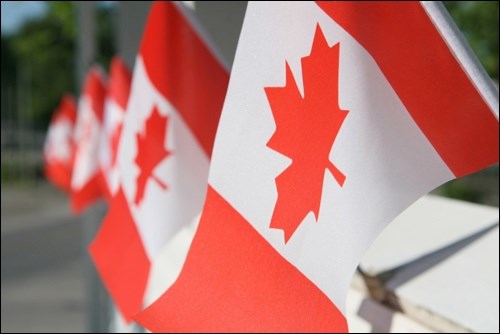VANCOUVER, B.C. / Troy Media/ - Hey Canada, June 7 was Tax Freedom Day. That means if you paid your taxes up front, you'd give government every dollar you earned before Tax Freedom Day. From that day onward, you're finally working for yourself and your family.
If it sounds like you're paying a lot of taxes, it's because you are. That includes everything from income taxes, payroll taxes, health taxes, sales taxes, property taxes, fuel taxes, vehicle taxes, profit taxes, import taxes, to various "sin" taxes, and much more.
Some of these taxes are visible but many are hidden, making it nearly impossible for the average Canadian to get a clear sense of all the taxes imposed by different levels of government.
Therein lies the value of Tax Freedom Day. It's a handy measure of the total tax burden imposed on Canadian families by the federal, provincial and local governments.
In 2016, we estimate the average Canadian family consisting of two or more people will earn approximately $105,200 in income and pay a total of $45,200 in taxes. In other words, the average Canadian family will pay 43 per cent of its income in taxes.
Despite taking 43 per cent of our incomes, that level of taxation is not enough to satisfy the excessive spending habits of our governments. This year, the federal government and seven of 10 provinces will run deficits, spending more than what their revenues would allow.
Specifically, the federal government alone is projecting to spend nearly $30 billion more than its revenue take, while the provinces are set to cumulatively spend $18 billion more. If governments in Canada increased taxes further to balance their budgets instead of financing expenditures with deficits, Tax Freedom Day would arrive 11 days later. That means you would start working for yourself on June 18 - only after working for the government for the first 169 days of the year.
The important question, of course, is whether we get value for all the taxes we pay to finance government spending. While it's ultimately up to individual Canadians to make this determination, some perspective might help.
In most provinces, more than 50 per cent of our tax dollars finance overly generous pay for government employees. In fact, government employees, on average, receive 9.7 per cent higher wages than comparable private-sector workers doing similar work. And that's on top of the much more generous non-wage benefits (pension coverage, job security, early retirement) the government sector enjoys.
In the case of health care, which consumes more than 40 per cent of provincial budgets and is a fast-growing expense, international comparisons show that despite a high level of spending, Canadians have comparatively poor access to technology and doctors, and longer wait times for surgery. It's hard to see how we're getting value for money in public health care when measured against other countries that also offer universal access.
And then there's spending on public schools, a key item financed by tax dollars, which continues to go up and up while public school enrolment across the country drops. Of the increase in public education spending over the decade ending in 2012/13, teacher compensation (wages, benefits and pensions) accounted for the overwhelming majority.
Most troubling is when our tax dollars are outright wasted on boondoggles and failed government programs. A recent study documented more than 600 cases where the federal government failed to meet its own objectives over a 25-year period, resulting in up to $197 billion of wasted tax money.
On that note, Happy Tax Freedom Day Canada, although we're not quite sure there's much to celebrate.
Charles Lammam is director of fiscal studies and Milagros Palacios is senior economist with the Fraser Institute. They are co-authors of Canadians Celebrate Tax Freedom Day on June 7, 2016.
www.troymedia.com



